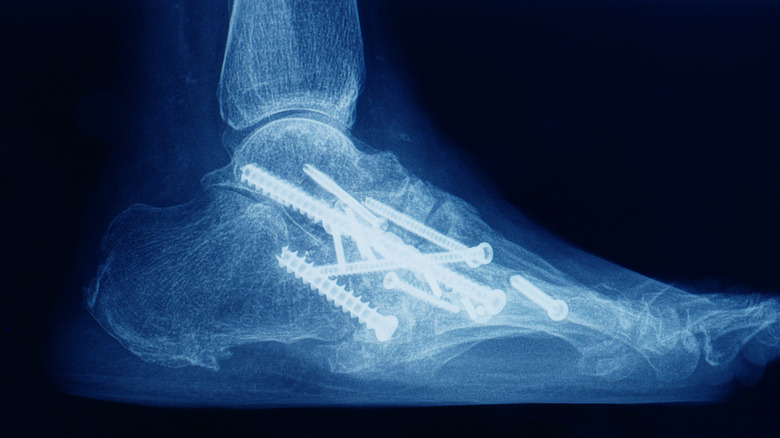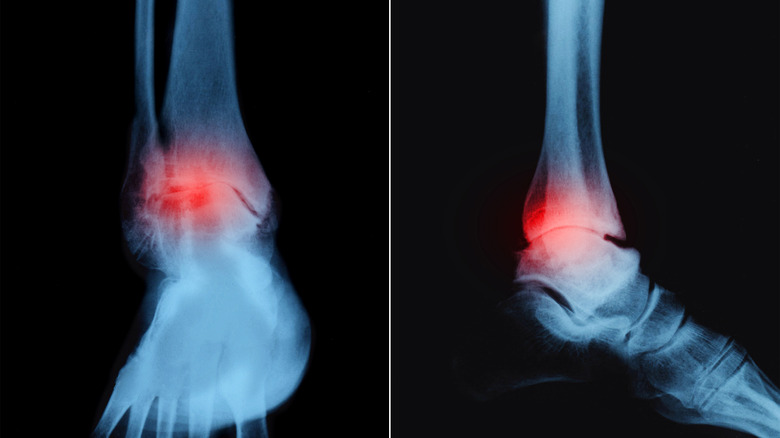New Study Offers Hope For People With Osteoarthritis
Individuals with osteoarthritis in their ankles may find themselves open to more treatment options after a new study provides interesting results, Healthline explains. For individuals who are experiencing later-stage osteoarthritis, surgery is often a common treatment option to help improve the mobility of the joint, as well as provide the patient with some relief from pain.
Mayo Clinic explains that there are millions of Americans who experience osteoarthritis. While the degenerative disease typically affects the joints in the hips, knees, spine, and hands, individuals can show symptoms in any joint. Symptoms of osteoarthritis can include pain, swelling, loss of mobility, tenderness in the joint, stiffness, and bone spurs (via Mayo Clinic).
Osteoarthritis in the ankle is typically caused by an injury to the ankle. In fact, according to Healthline, 78% of ankle osteoarthritis cases are a direct result of an ankle injury that occurred earlier in the individual's life. Injury to the ankle makes the joint nearly seven times more likely to develop osteoarthritis.
Those in earlier stages have different options to treat osteoarthritis. For many years, when the symptoms of ankle osteoarthritis became severe, ankle fusion surgery was typically the preferred option. However, new research explains that an alternative option may offer similar benefits.
A study published in the Annals of Internal Medicine examined the results of a comparative study on patients who'd received either ankle fusion surgery or ankle replacement surgery to determine which is better.
Ankle fusion versus ankle replacement
Duke Health explains that an ankle fusion surgery differs from ankle replacement surgery. In an ankle fusion, parts of the joint are fused to the bone using screws and grafts to prevent them from moving. In an ankle replacement surgery, the pieces of bone and cartilage are removed and replaced with a medical-grade metal and plastic prosthesis.
The study examined 281 final cases where patients between the ages of 50 and 85 years of age had undergone either surgery. Participants were examined periodically across a 52-week span. The study results illustrated that both surgeries had similar scores in areas of healing, adverse effects, and mobility (via Annals of Internal Medicine). The results of this study provide physicians, surgeons, and patients with more flexibility in their treatment plans for end-stage ankle osteoarthritis.
According to Duke Health, the recovery time for ankle fusion surgery can be up to 12 weeks spent in a cast. Additionally, physical therapy isn't a part of recovery for fusion surgery, as the joint is locked into place. For ankle replacement surgery, average recovery times can be three to six weeks in a cast, followed by physical therapy. Ankle replacements can last 10 years or longer before needing re-evaluation.
If you are dealing with pain, inflammation, stiffness, or other osteoarthritis symptoms, you may want to discuss your options to determine if ankle replacement surgery is the right choice for you.


